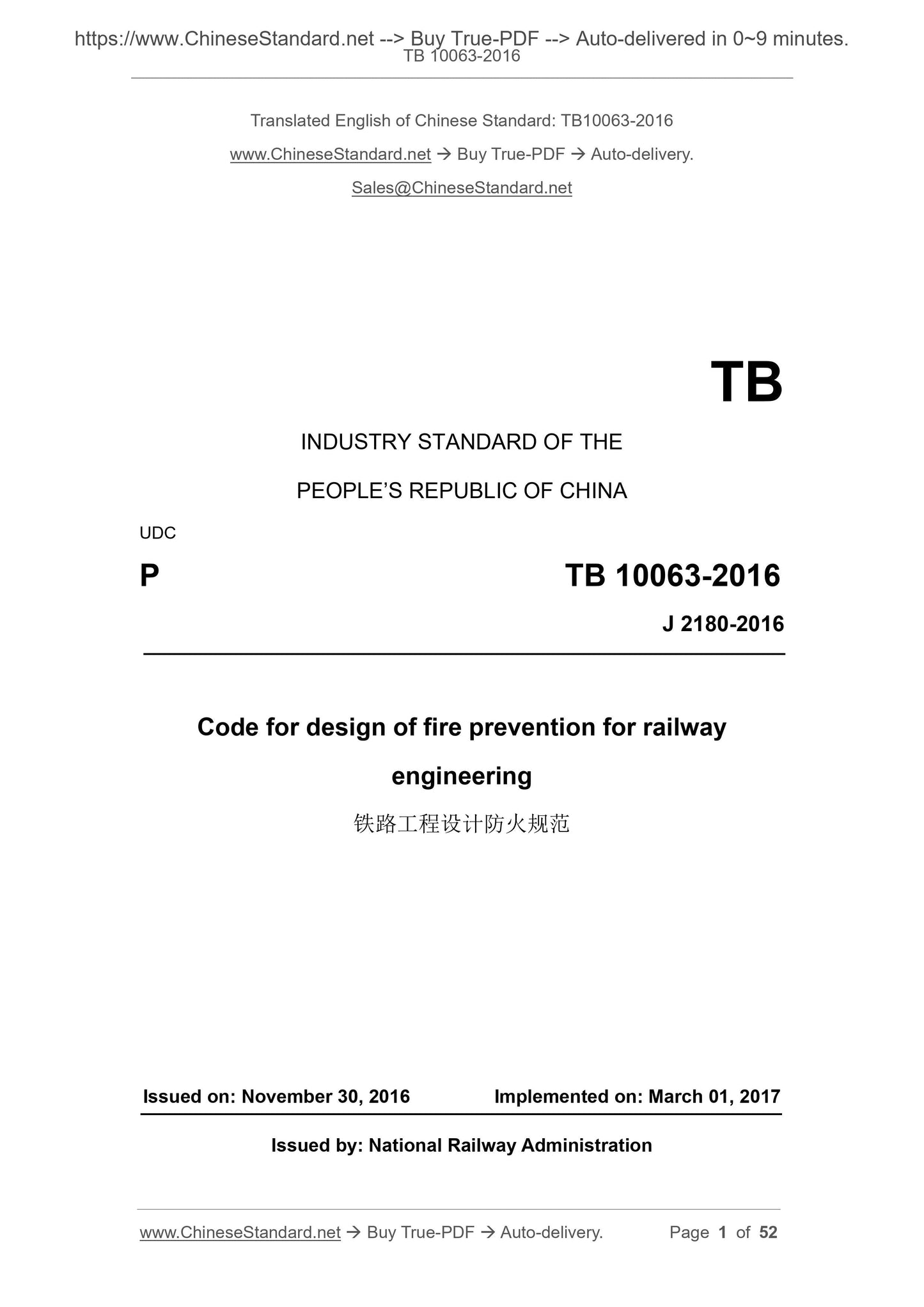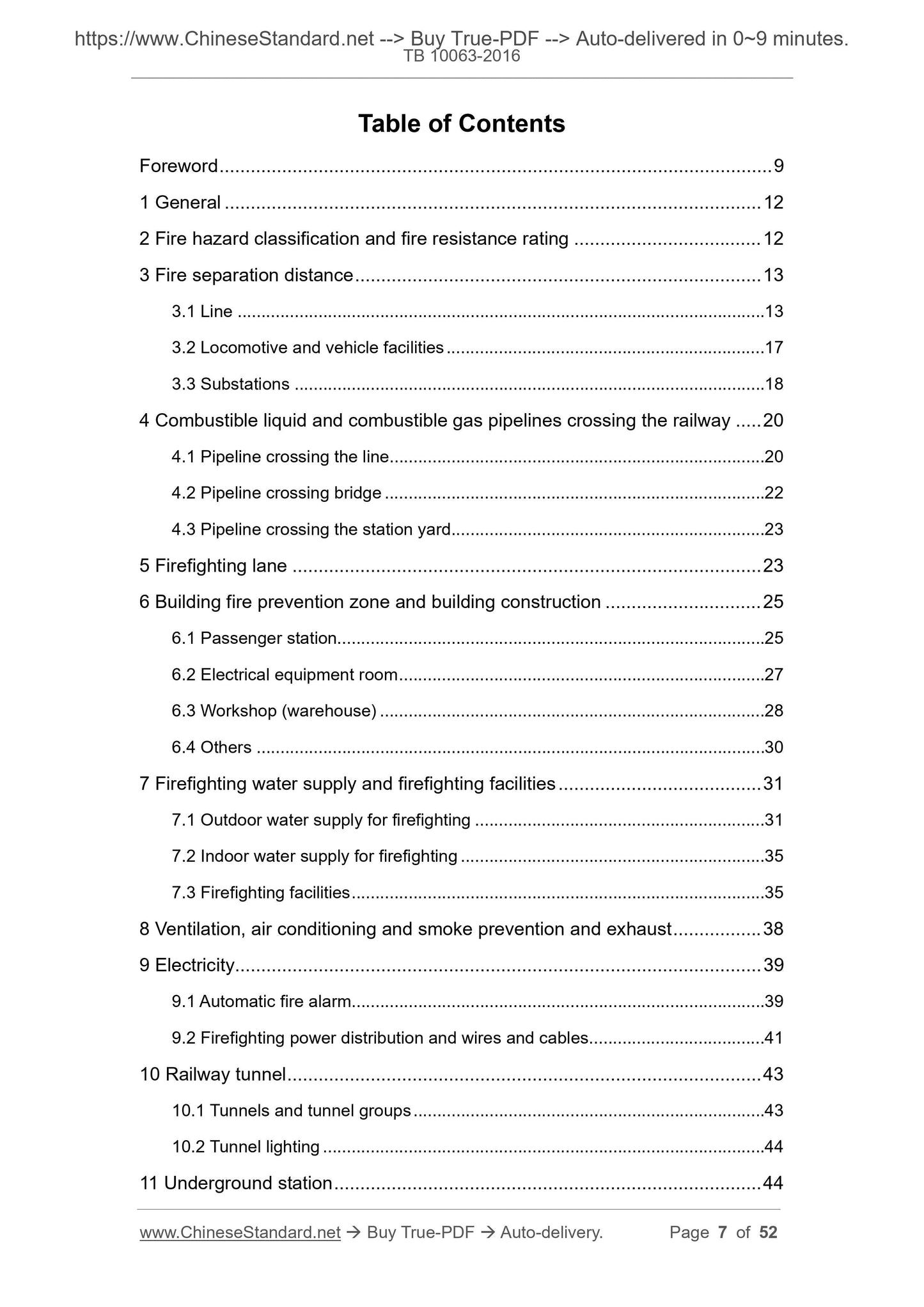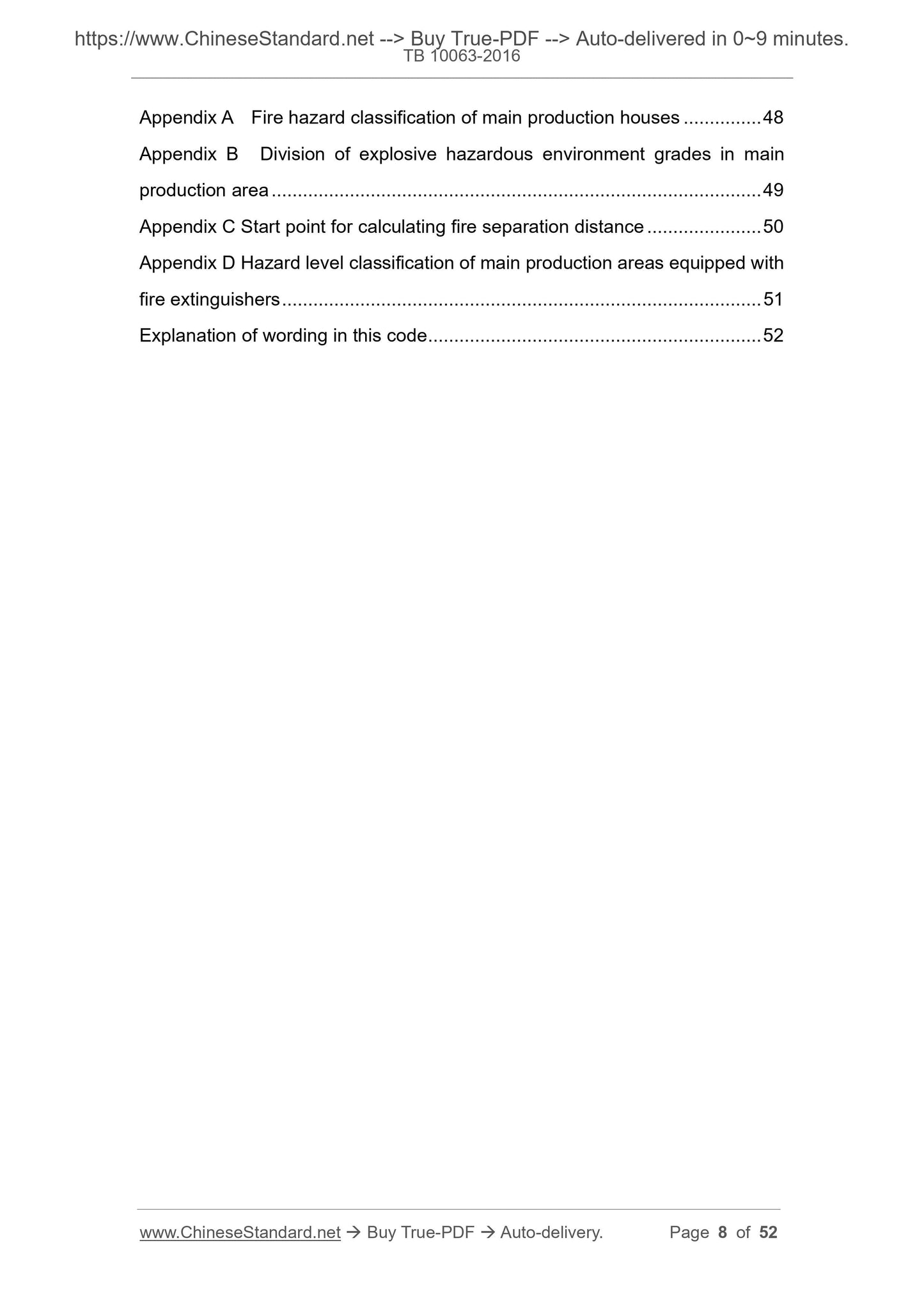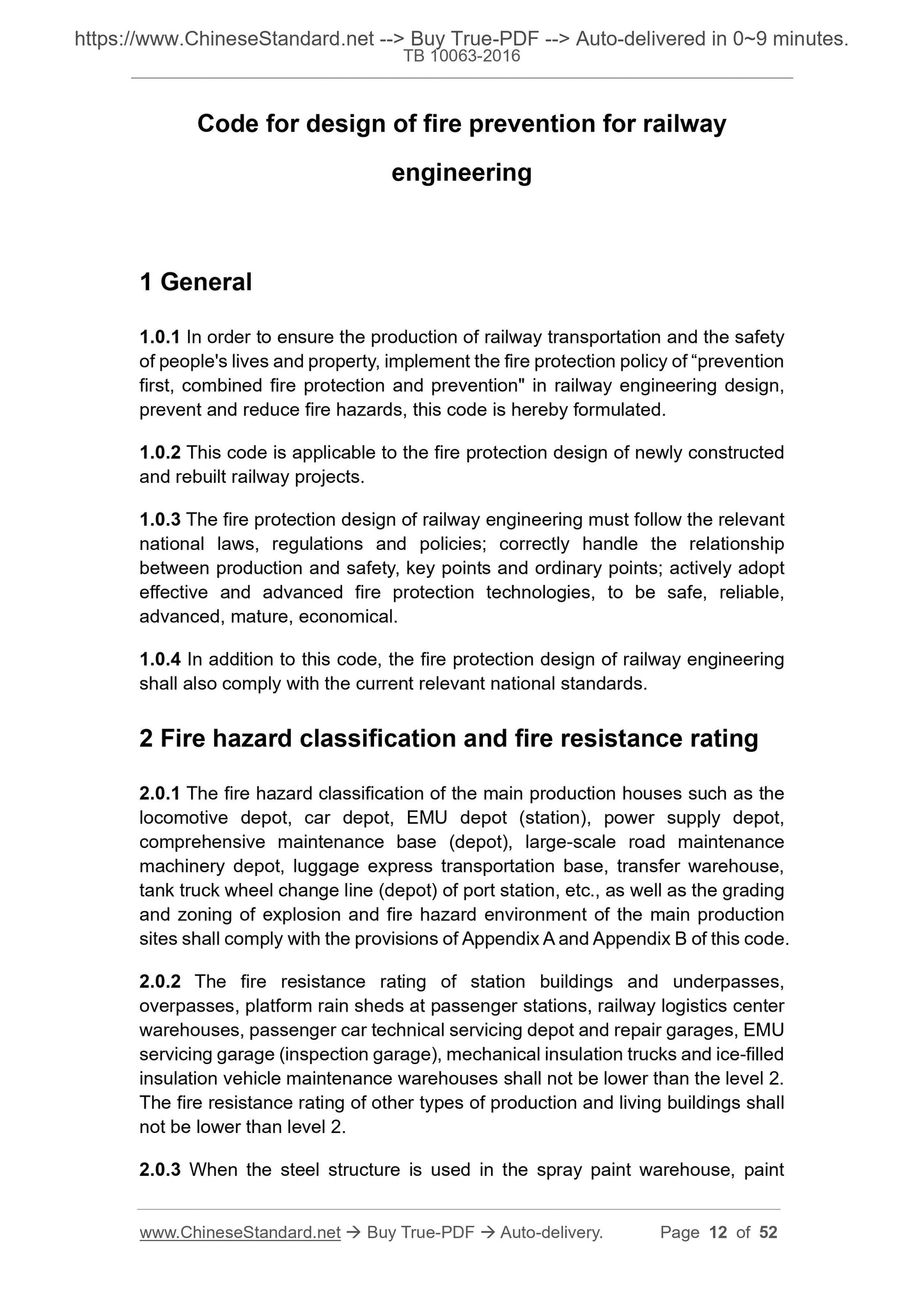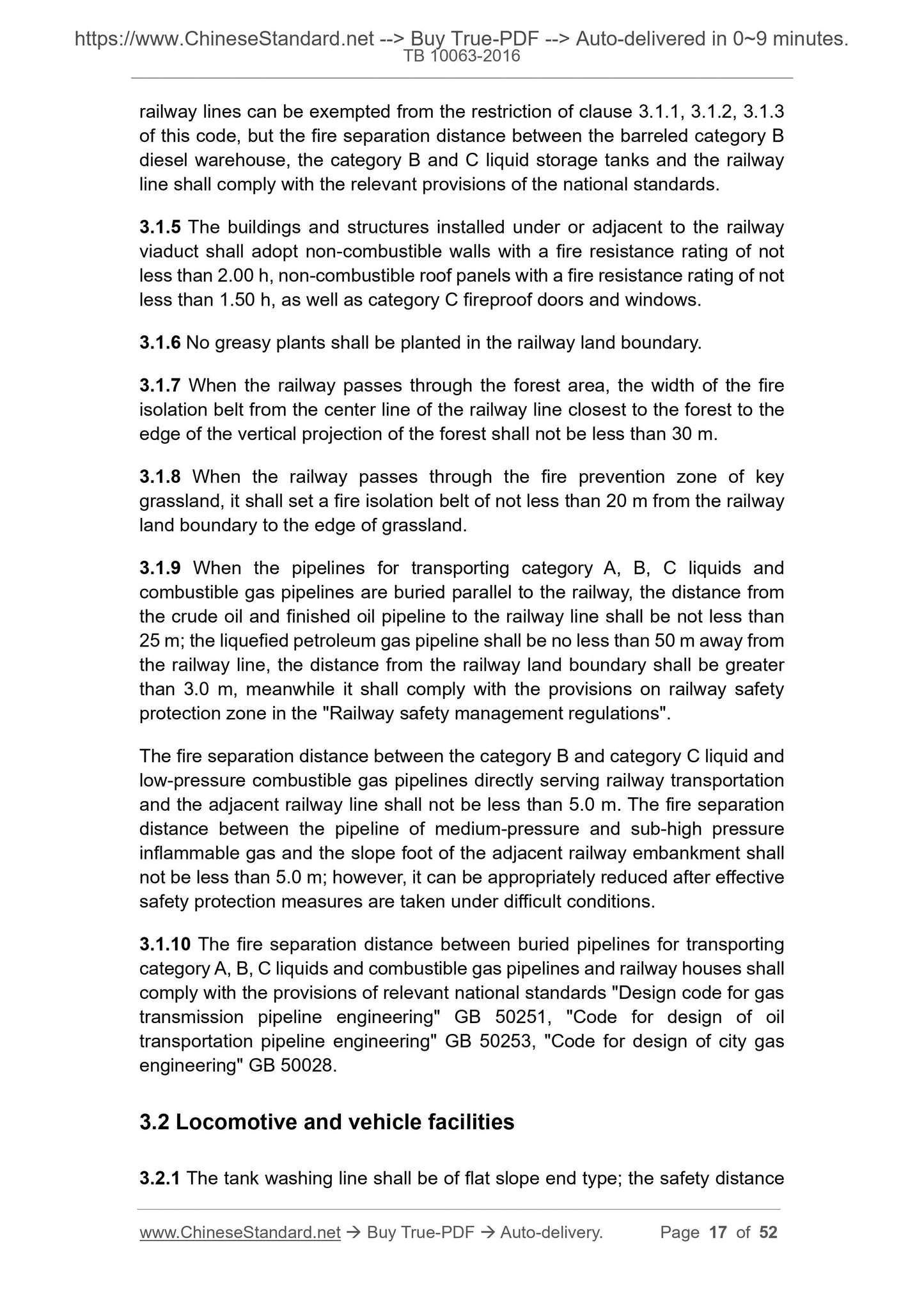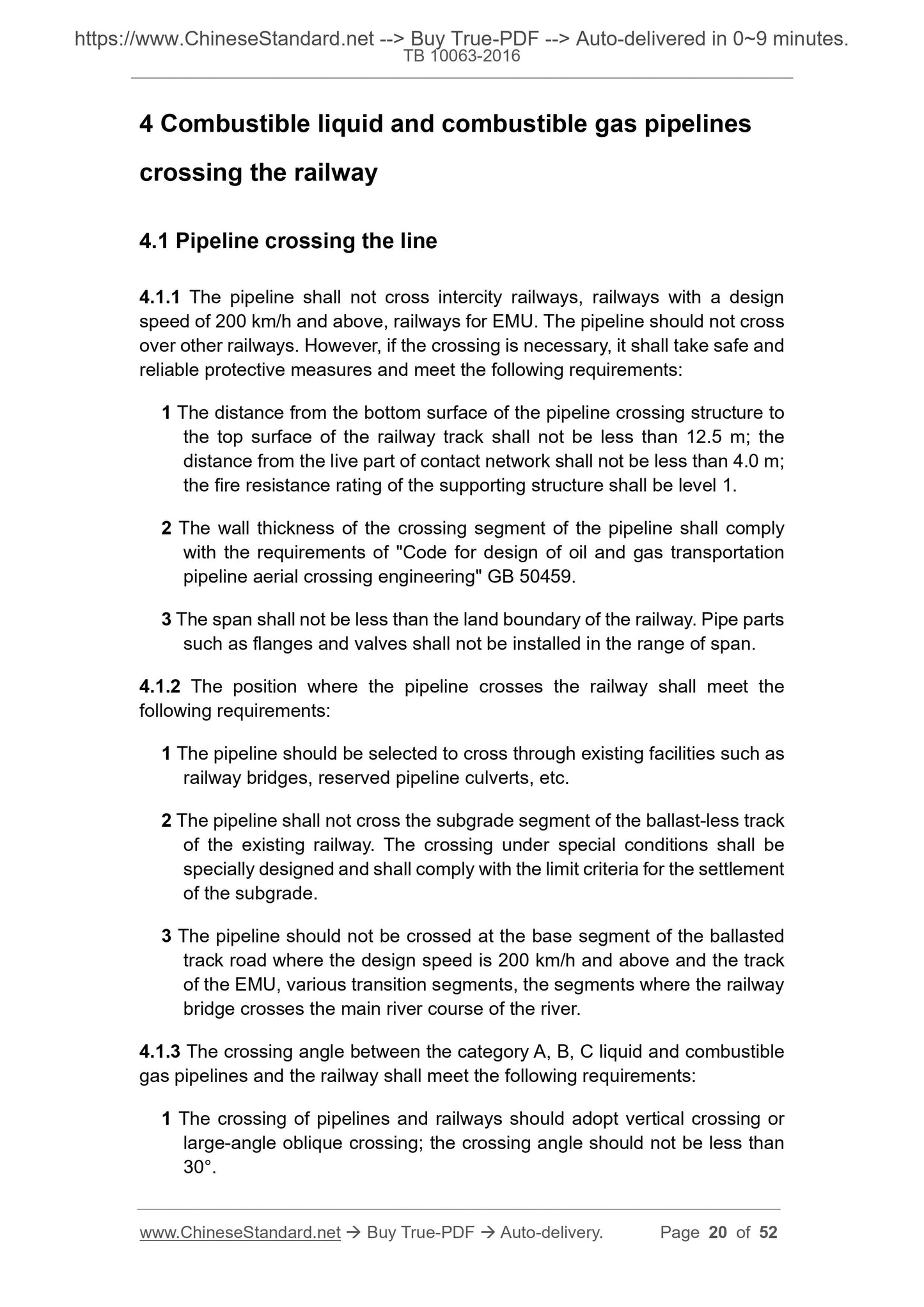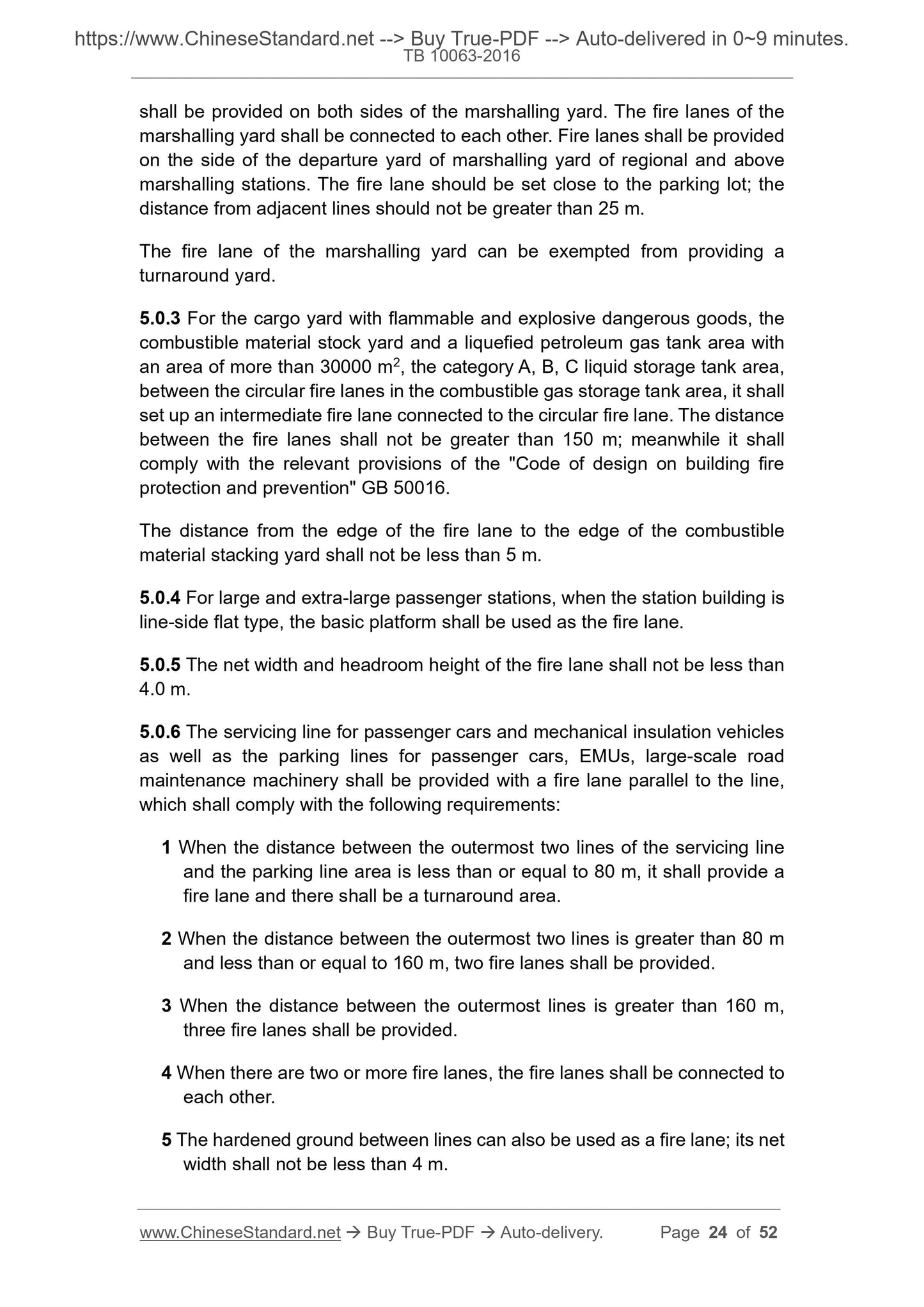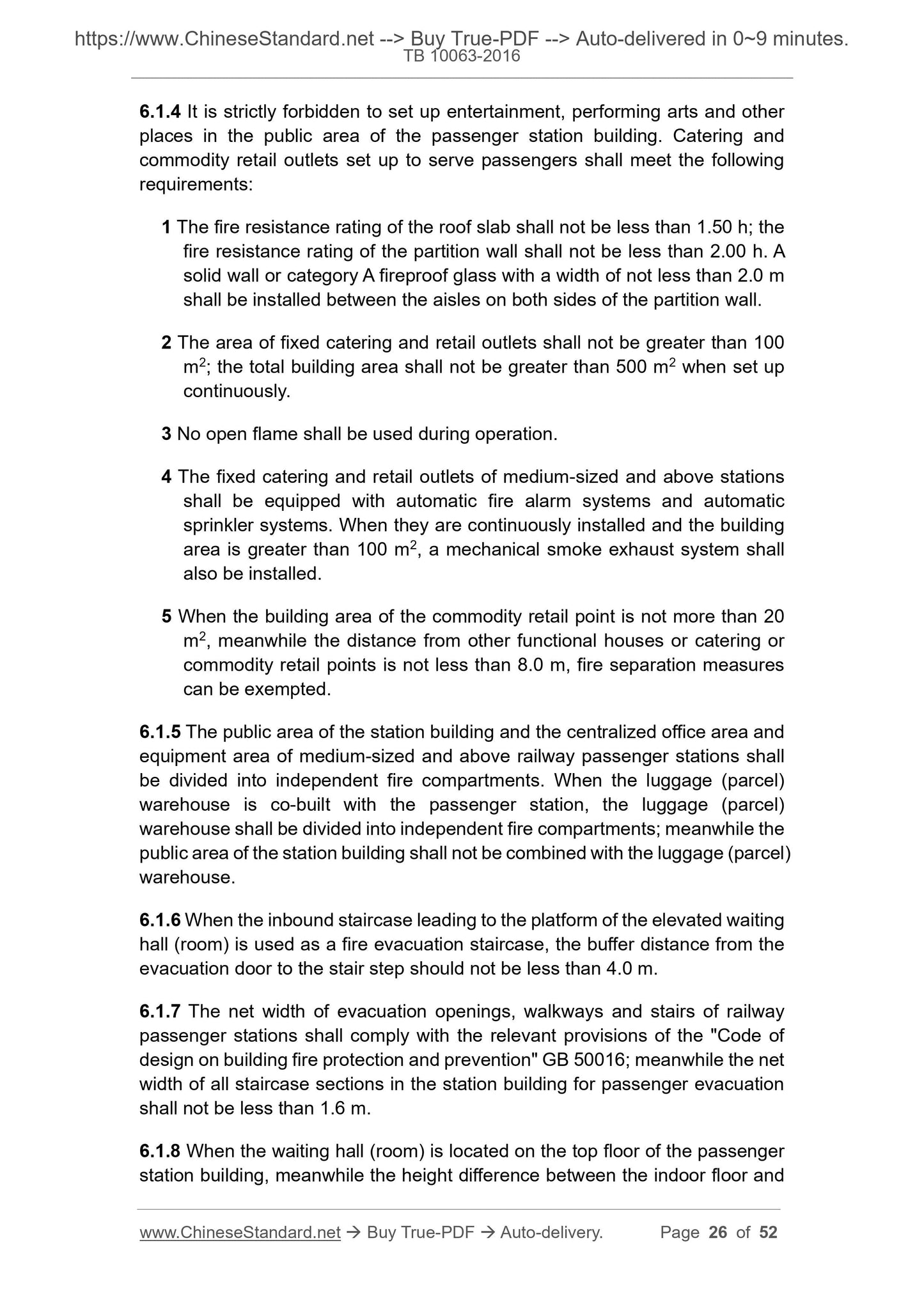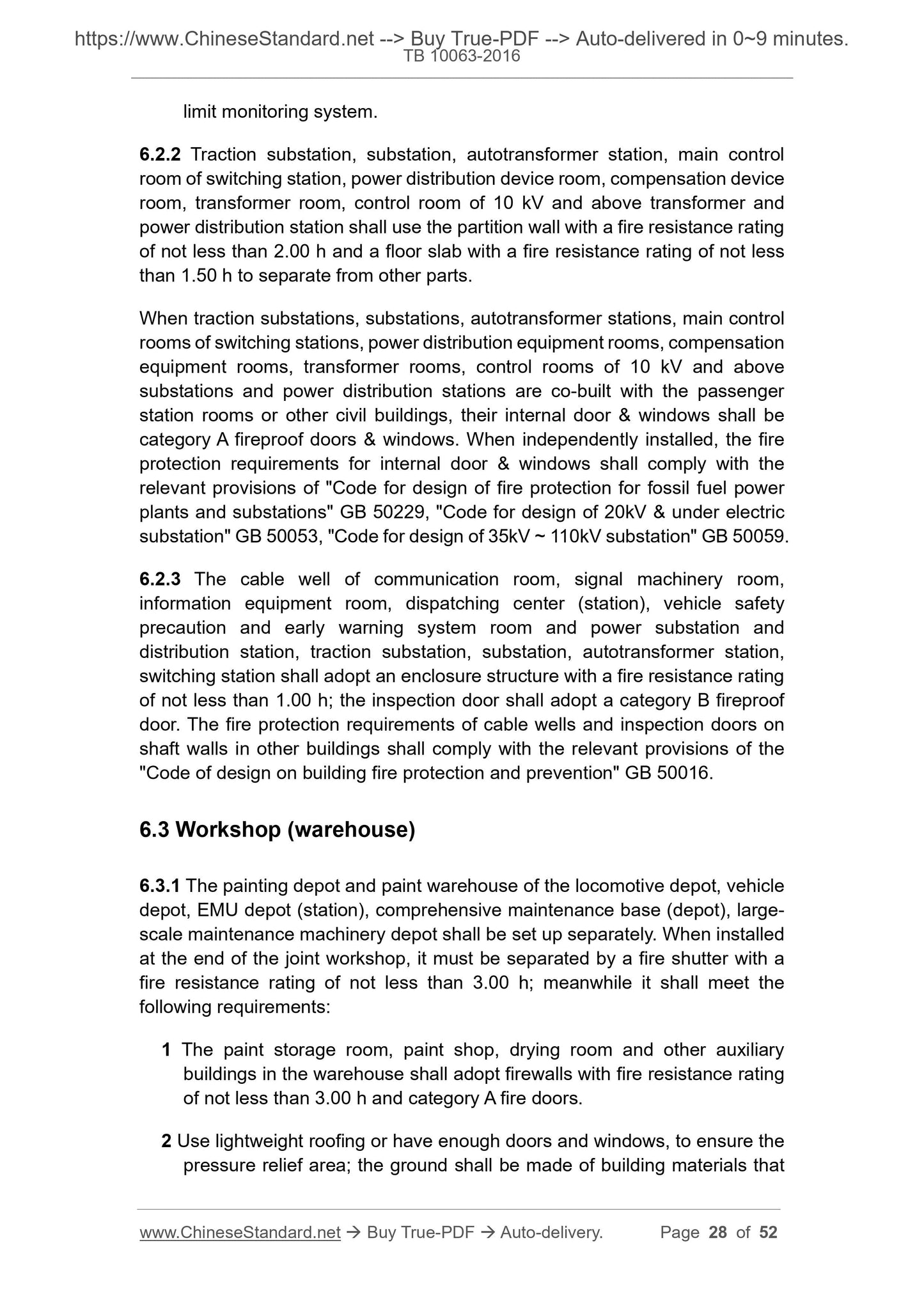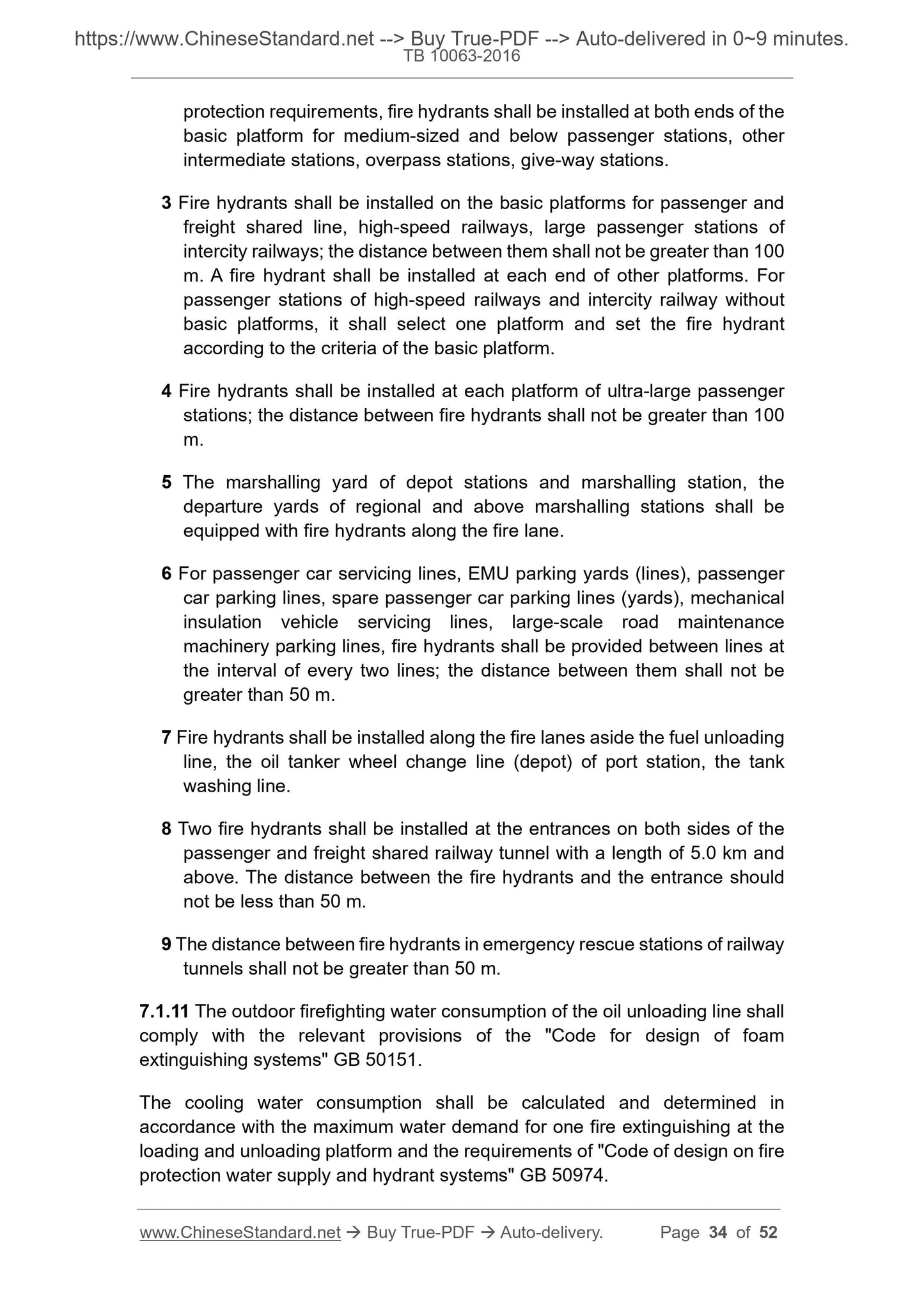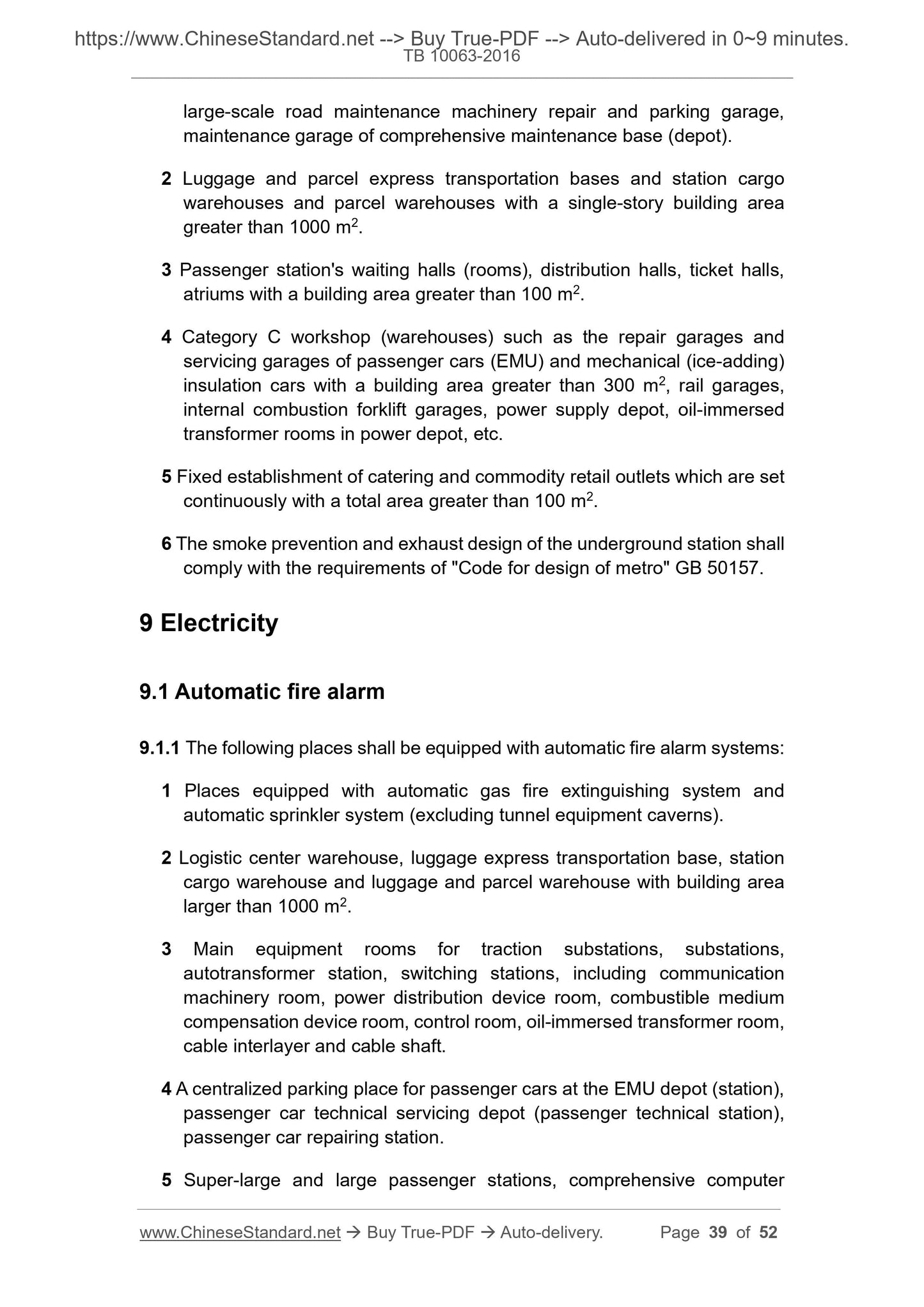1
/
of
12
www.ChineseStandard.us -- Field Test Asia Pte. Ltd.
TB 10063-2016 English PDF
TB 10063-2016 English PDF
Regular price
$1,405.00
Regular price
Sale price
$1,405.00
Unit price
/
per
Shipping calculated at checkout.
Couldn't load pickup availability
TB 10063-2016: Code for design of fire prevention for railway engineering
Delivery: 9 seconds. Download (and Email) true-PDF + Invoice.Get Quotation: Click TB 10063-2016 (Self-service in 1-minute)
Newer / historical versions: TB 10063-2016
Preview True-PDF
Scope
1.0.1 In order to ensure the production of railway transportation and the safetyof people's lives and property, implement the fire protection policy of ��prevention
first, combined fire protection and prevention" in railway engineering design,
prevent and reduce fire hazards, this code is hereby formulated.
1.0.2 This code is applicable to the fire protection design of newly constructed
and rebuilt railway projects.
1.0.3 The fire protection design of railway engineering must follow the relevant
national laws, regulations and policies; correctly handle the relationship
between production and safety, key points and ordinary points; actively adopt
effective and advanced fire protection technologies, to be safe, reliable,
advanced, mature, economical.
1.0.4 In addition to this code, the fire protection design of railway engineering
shall also comply with the current relevant national standards.
Basic Data
| Standard ID | TB 10063-2016 (TB10063-2016) |
| Description (Translated English) | Code for design of fire prevention for railway engineering |
| Sector / Industry | Railway and Train Industry Standard |
| Classification of Chinese Standard | P65 |
| Word Count Estimation | 80,825 |
| Date of Issue | 2016-11-30 |
| Date of Implementation | 2017-03-01 |
| Older Standard (superseded by this standard) | TB 10063-2007 |
| Regulation (derived from) | State-Railway-Technology-Regulation (2016) No.48 |
| Issuing agency(ies) | National Railway Administration |
| Summary | This standard applies to the new, alteration of railway engineering fire protection design. |
Share
